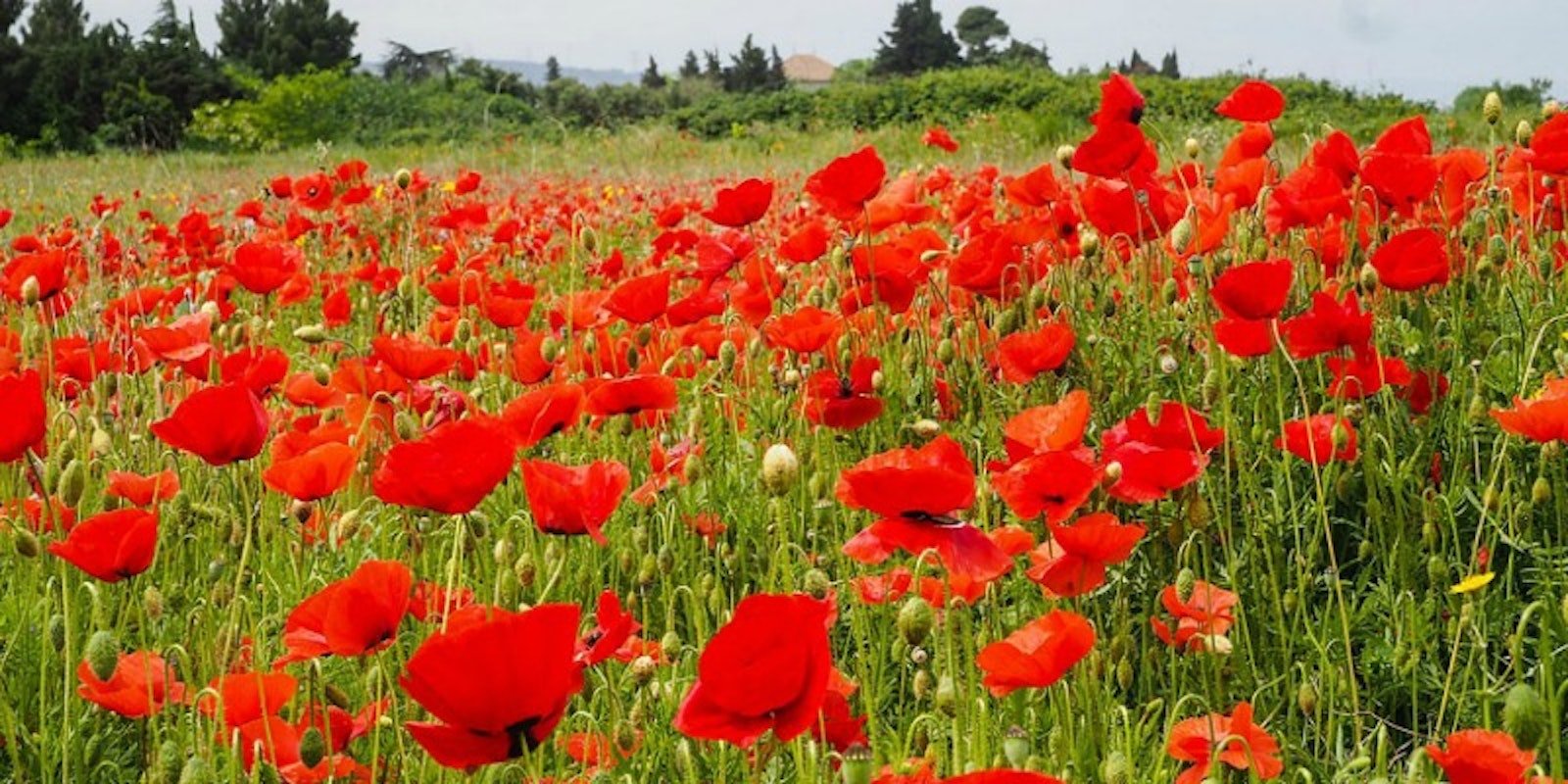I had shelves full of yarn, books, and magazines full of projects, but no inspiration. Then, while browsing the Eugene Textile Center booth, I saw it: a gorgeous hand-dyed skein of 3/2 Tencel in fiery reds, oranges, and just a hint of purple.
Right off the bat, I realized that because of the yardage in the skein and the thickness of the Tencel, this yarn was destined to be the pattern weft in an overshot piece. This meant I would need to choose a warp and tabby weft that would play nicely with the variegation. In the moment, I picked up a cone of red 8/2 Tencel that matched one of the colors in the variegated yarn, thinking it would be the ideal backdrop. Fortunately, once I got home, I remembered everything I’d learned about color in weaving from all the video I’d watched and articles I’d read, and realized my error before I warped the loom.
I wanted my variegated yarn to really pop and be the center of attention—the star of the proverbial show. You don’t get a color to pop by placing it next to more of the same or a similar color. If I were to use a red yarn that matched the red of the variegated Tencel, then the two would blend together and it would be less a statement piece and more an okay scarf. I needed to choose a new secondary color that would set off my fiery yarn rather than distract from it. I used one of my favorite flowers, poppies as inspiration. I wanted my scarf to evoke the same feeling as when you see a bright red poppy with a black center, and so I found a cone of black 8/2 Tencel and started to search for the right draft.
Drawdown of the Ancient Rose draft.
Using the idea of a poppy as my guide, I began to search for overshot drafts in my books and online. I wanted something floral, and the more it looked like a poppy, the better. Rule number one of color in weaving is to consider the interlacement of warp and weft. The shorter the weft floats, the less of the variegation would be on display, so I wanted something with reasonable floats—floats long enough to set off the weft, but not so long they would snag. I searched high and low but couldn’t find what I wanted. I was feeling frustrated when my husband picked up my copy of Davison’s book and turned to a page I’d bookmarked years ago. The past me apparently knew what she was doing because there it was—Ancient Rose.
While it looked on the page a bit like a primrose the way most “roses” in overshot do, in my head I could imagine it in my chosen yarns, and it looked all the world like a poppy. It was perfect. I did my calculations, played a bit in my weaving software to make sure the header and footer of my scarf would look nice, and got to warping. Once the loom was set up, I was nervous, but I’d put on more than enough warp for sampling so I could weave a repeat (or two or three) and rethread if I had to. Fortunately, the draft on the loom was even better than what I’d imagined leaving me with enough warp to weave two scarves! (Although I think I might try treadling the draft “star fashion” for the second scarf.)
My beautiful poppy-inspired scarf on the loom.
At this point, I’m about halfway through my scarf. It’s slow going as I only have a short period of weaving time each day, but I love every second. I’m remembering the joy of seeing patterns magically appear on my loom, pick by pick. As I weave my poppies, I smile, and for those brief moments, I get lost in a sea of color.
Happy Weaving,
Christina



